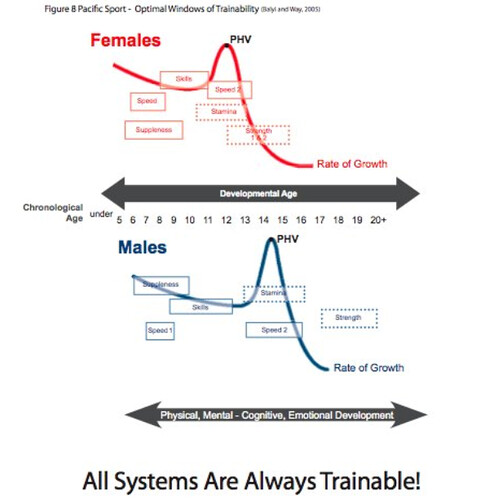Parents role in Long Term Player Development in Judo
As a parent you will watch your child grow up, you better than anyone else are often able to see the different phases in your child’s development. You will know when your child has hit a growth spurt or when puberty has started. You have a perspective that your child’s coaches do not and this can be immensely valuable to the coach and to the long term development of your child physically and specifically in Judo.
As your child develops there are what are termed “Windows of Trainability”, meaning periods where certain physical attributes can be trained for optimal development. These areas are Suppleness, Speed, Skills, Stamina and Strength. In some areas there are more than one “window”. If your child is able to develop in these areas at the right time, according to their own unique physical development; this will help there progression in all sports including Judo. Do keep in mind however, that ALL areas can be trained at all times! The windows simple indicate times when training is likely to be more advantageous.
The difficulty is that these “windows” are timed against your child’s PHV, or Peak Height Velocity.
The PHV is different for all children but is generally between 11 and 13 for boys (with the growth spurt starting from 10 to 12 years old) and 13 and 15 for girls (starting from 8 – 10 years old). As a parent you will likely notice it first as your child starts to quickly outgrow clothes etc. Also the growth spurt is associated with puberty, so other physical (and emotional) changes will begin to appear. Before, during and after the PHV there are windows of trainability.
- Balyi and Way, 2005 – Windows of Trainability
In the figure here, by Balyi and Way, and snipped from the excellent Coaching Judo.com website, you can see the windows along with the rate of growth in your child and the PHV. You can also see that the windows are timed differently for boys and girls. As a parent you can help guide your child towards activities in and out of Judo sessions that reflect these windows. For example, Suppleness could be developed by enrolling your child in gymnastics as well as Judo. Speed could be developed outside of the dojo by encouraging your child to have races with you or the dog. Stamina might be aided by taking long bike rides together on weekends or going for long walks?
Just as importantly is communication with the Judo club coaches. If your child is maturing early and has started their growth spurt, at this stage their training might benefit from changes. At the peak of their growth spurt, boys in particular can be “gangly” and perhaps less co-ordinated than normal. At this stage skill development might be reduced in favour of sessions that are more conditioning based. This serves two purposes, it takes advantage of the stamina window and also lessens any potential negative feelings your son my develop for Judo as they suddenly find it more difficult to learn and execute skills as their body changes so dramatically. By communicating with the club coaches, you can inform them of your child’s development and they can modify the sessions or point you at alternative sessions or clubs that might be better suited to your child’s stage of development.
As a parent you are also aware of the emotional maturity of your child. This is important to consider and does not necessarily match physical maturity. Especially with children that develop early physically, they can be moved into adult classes or more serious training before they mature emotionally (or mentally). Coaches do not spend the hours with your child that you do, and will notice physical size and strength before emotional maturity. As Judo is a weight based sport, a child who hits their growth spurt early may be forced to change class earlier that a late developer, it is a challenge for you and the club to ensure that which ever group your child is in, they enjoy and benefit from their Judo training. Again, good communication with the club and coaches will help ensure this happens.
For more information: Please look at the LTAD section of http://coachingjudo.com/ also worth reading is the LTPD document produced by the British Judo Association, which sadly does not appear to be easily available on their website.
